
The technologies of the modern world are complex, high-tech, but we feel it easily, because they are from our era. New ideas appear, new inventions that turn this or that industry upside down. Transport is gradually becoming more perfect, more economical, faster, quieter and more comfortable. Some technologies manage to survive the transformation and remain in demand, while others leave us forever.
I had the idea to hold a retrospective and create something completely forgotten in order to plunge into this "ancient", imperfect world, which, in my opinion, is saturated with "engineering" romance. Steam energy. That's what gave the technical breakthrough. It was this type of energy that propelled humanity to a new level, and it was this technology that became the basis of the industrial technological explosion.
Idea
Of course, the most prominent representative of the technology of that time was the steam engine. I wanted to create the simplest type of such an engine, so that I could understand everything, rebuild and feel the spirit of that time. And of course, for my work to have meaning, it must have some kind of working concept. And since I'm a motorcycle lover, it was decided to make a steam motorcycle. First, as I said, this will be the applied application of the engine, and second, what properties and characteristics it has. In addition, in the process of real operation it will be possible to understand its disadvantages and inconveniences of use.
Operating principle
The principle of operation of a steam engine is quite simple. The cylinder contains a piston with a rod (rolling pin) fixed to it. By supplying steam from different sides of the piston, we make it reciprocate.
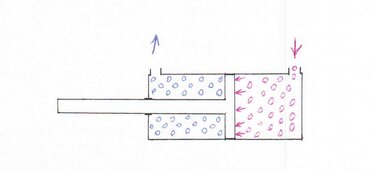
Steam switching is performed by a slide valve. It moves in its own separate cylinder and redirects steam to one or another part of the working cylinder.
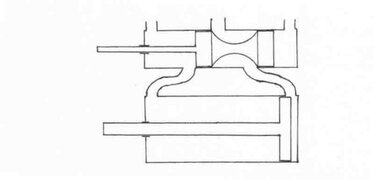
It is designed in such a way that it simultaneously lets steam into one cavity and releases it from another.
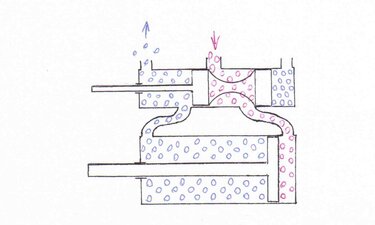
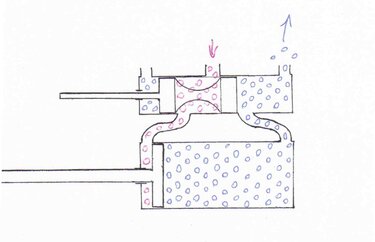
A flywheel is required to by inertia pass through the "blind spots". This is a wheel that rotates with a separate drawbar by means of a crank attached to the wheel. From the same wheel, the moment of force is removed for the movement of the spool valve to switch the steam.
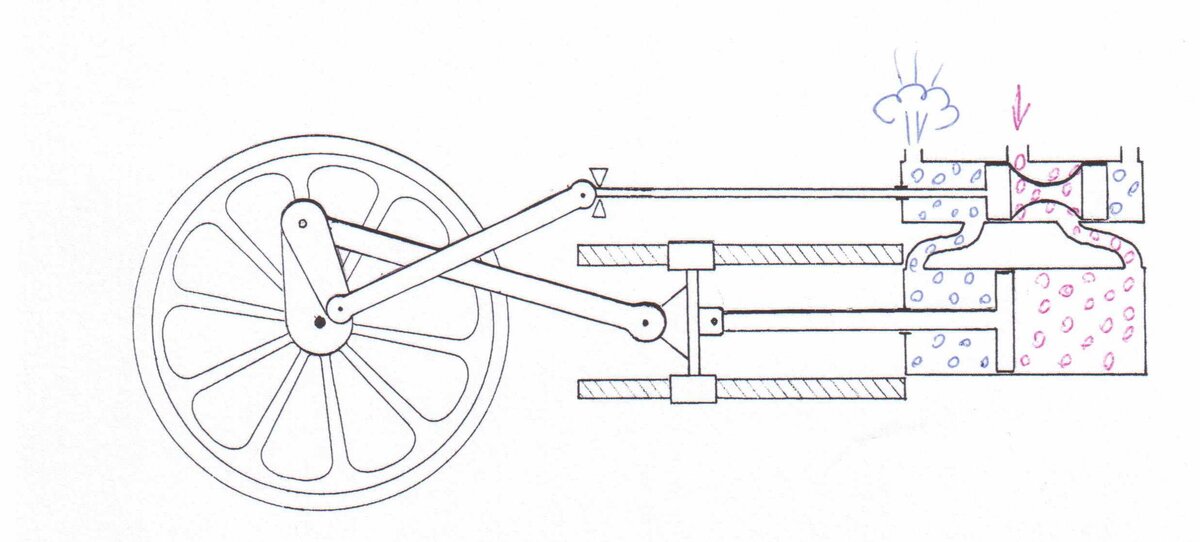
In general, the system is very similar to an internal combustion engine (ICE), but there are a number of differences. Firstly, due to the absence of a connecting rod, like in an internal combustion engine, the rod does not make unnecessary oscillatory movements, this makes the piston very simple. Secondly,
in a steam engine, it is possible to make the piston do the work by moving in any direction, since both cavities are hermetically sealed. And thirdly, since the "steam engine" does not have an intake stroke of the working mixture (analogy with a 4-stroke internal combustion engine), each stroke of the piston is beneficial.
What is it, the steam engine is 4 times more powerful?
It's not quite that simple. Steam engines are very slow-moving. This is due to the fact that it is necessary to run the working fluid (steam) into the cylinder, and this process is relatively slow. At the internal combustion engine, the piston pushes the burnt mixture of gasoline and air. The expansion rate in such an “explosion” cannot be compared with the steam admission rate. That is, the internal combustion engine is a very resourceful type of engine. In sports motorcycles, the shaft rotation speed reaches 16,000 rpm, as you know, engine power is the product of the moment of force and rotation speed. So the war of gasoline and steam was lost. The steam engine is good in places where speed is not so important. For example, as a stationary water pump, on ships, and of course, on trains. But the steam engine has one very convenient advantage. Since it is not necessary to create special conditions for the explosion of the working mixture,the moment of force of such engines starts already from zero speed, so the clutch and gearbox are unnecessary. And of course, I could not help but take advantage of this.
Construction
Unfortunately, it is extremely difficult to find any spare parts for such forgotten technologies. I had to do everything from scratch. I even had to master the casting of aluminum. All parts were completely invented and manufactured locally by me. I went to the metal collection point for materials, so everything turned out almost free. I thought that the most understandable and interesting format for manufacturing, tuning and testing a steam engine would be to shoot a small video material. This makes it easier to explain and immediately show on real-life details. For your attention, please, the first 3 episodes. Write down what you think about this. I am interested in your opinion, I will be glad to your advice.
Creating a motorcycle frame:
Steam engine manufacturing 1 series:
Steam engine manufacturing 2 series:
Continued in the article " Energy of the Old World "
I look forward to your comments.